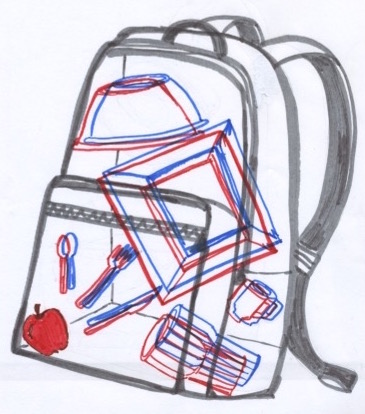
LEWIS & CLARK REPORTS tuition for the 2016-2017 academic year as $46,534. This excludes the price of meals, a room, textbooks and every other miscellaneous cost. For the same amount, someone could buy 2,932 haircuts, 17,693 gallons of gasoline and rent 35 apartments, according to Bank Rate’s price of living for the Portland area.
Our tuition does not, however, buy dishware from Bon Appétit.
This is not a new concept, or even an event that is inherently ill—intended. Who hasn’t forgotten a spoon in her bag now and again? Many students view this theft with a flippant, even justified attitude. What is a bowl or fork compared to the great sea of money already paid every year?
This is a pattern repeated across college campuses nationally. Jennifer Lee of the Michigan Daily reported that University of Michigan “spent about $40,000 last fiscal year to replace and add necessary pieces [of cutlery].” One UM student, junior Hiral Pithadia, said that he “felt that it was appropriate to, kind of, borrow some things from there” as long as he lived in the residence halls. In his eye, he was justified as long as he had the intention of eventually returning what he took. Even with the collection boxes for all misplaced dishware at the end of the year, a steady stream of utensils, plates, and bowls were carefully pilfered by the 11,000 students.
Though LC brags a mere 18% of University of Michigan’s student population, the results of the accrued goods is still impressive.
Bon Appétit replaces items as they are needed. In a twelve-month period, they replaced 3,720 teaspoons, 2,304 forks, 204 knives, 1,152 glasses, 950 bowls (big and small), 108 small plates, 240 larger plates, and 1,008 mugs. The total cost was $10,449.
Mac Lary, General Manager to Bon Appétit at LC, said, “One of the biggest losses we have is the mug and also the clear cup … You’ll see these black mugs all over campus as school goes on, especially in dorms. I remember looking at a dorm window and a kid had built a pyramid of black mugs. And yet … [we] read comment cards, ‘There’s no cups. You’re out of cups.’”
To many students this is not an issue. The losses to Bon Appétit is a price students are willing to pay, especially given the large price tag of their tuition. But this thinking is flawed; students pay in more ways than one.
“Anything that impacts costs gets passed onto the consumer. That’s how business works,” Lary stated. “This is a cost that impacts meal plans.”
In an attempt to lessen the amount of dishware lost, Bon Appétit began using more paper products at the end of last year. This is why the Trail Room uses only paper products:
“The losses were much more dramatic,” Lary said. The plan worked, too. Students stole fewer items, but not without a large downside. “[The dishware is] meant to be sustainable. And they’re a great product, very durable, so if we reuse them it’s a very sustainable process. Start throwing paper out there and … that’s not a sustainable practice,” Lary said.
There is an easy solution to each problem. Lary suggests, “When you take something out of here, bring it back. It’s a community issue.”
LC strives to be a green campus. It may be time students think beyond their own understocked shelves.
Subscribe to the Mossy Log Newsletter
Stay up to date with the goings-on at Lewis & Clark! Get the top stories or your favorite section delivered to your inbox whenever we release a new issue.

Leave a Reply